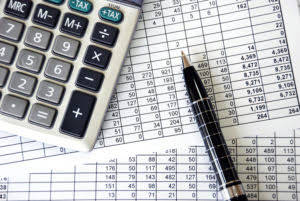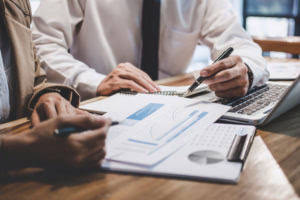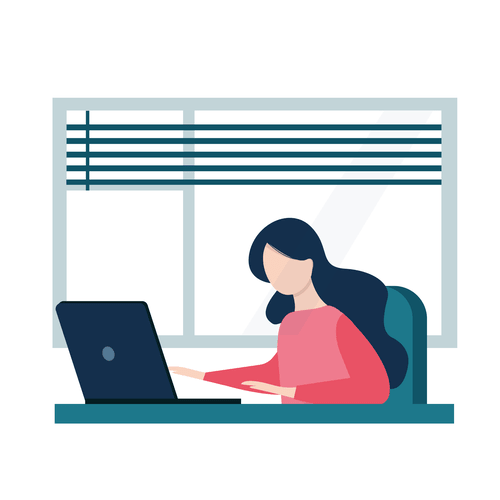
Current assets and liabilities can be converted into cash within one year. Almost all businesses use the double-entry accounting system because, truthfully, single-entry is outdated at this point. For example, if a business signs up for accounting software, it will automatically default to double-entry.
Ask Any Financial Question
Its applications in accountancy and economics are thus diverse. It can be defined as the total number of dollars that a company would have left if it liquidated all of its assets and paid off all of its liabilities. If a transaction is completely omitted from the accounting books, it will not unbalance the accounting equation. Because of the two-fold effect of business transactions, the equation always stays in balance. Double-entry bookkeeping is a system that records transactions and their effects into journal entries, by debiting one account and crediting another. Now, there’s an extended version of the accounting equation that includes all of the elements (described in the section above) that comprise the Owner’s Equity.
Examples of Accounting Transactions

At this point, let’s consider another example and see how various transactions affect the amounts of the elements in the accounting equation. Some common examples of tangibles include property, plant and equipment (PP&E), and supplies found in the office. Non-current assets or liabilities are those that cannot be converted easily into cash, typically within a year, that is. While we mainly discuss only the BS in this article, the IS shows a company’s revenue and expenses and includes net income as the final line.
Why You Can Trust Finance Strategists
- The accounting equation equates a company’s assets to its liabilities and equity.
- An error in transaction analysis could result in incorrect financial statements.
- On the other hand, double-entry accounting records transactions in a way that demonstrates how profitable a company is becoming.
- Although the balance sheet always balances out, the accounting equation can’t tell investors how well a company is performing.
- The accounting equation is the backbone of the accounting and reporting system.
- The accounting equation’s left side represents everything a business has (assets), and the right side shows what a business owes to creditors and owners (liabilities and equity).
- Current liabilities are short-term financial obligations payable in cash within a year.
Let’s take a look at the formation of a company to illustrate how the accounting equation works in a business situation. Owners can increase their ownership share by contributing money to the company or decrease equity by withdrawing company funds. Likewise, revenues increase equity while expenses the basic accounting equation may be expressed as decrease equity. When a company purchases goods or services from other companies on credit, a payable is recorded to show that the company promises to pay the other companies for their assets. A liability, in its simplest terms, is an amount of money owed to another person or organization.
- We’ll explain what that means, along with everything else you need to know about the accounting equation as we go on.
- This long-form equation is called the expanded accounting equation.
- Before explaining what this means and why the accounting equation should always balance, let’s review the meaning of the terms assets, liabilities, and owners’ equity.
- The accounting equation is so fundamental to accounting that it’s often the first concept taught in entry-level courses.
- Accounts receivable list the amounts of money owed to the company by its customers for the sale of its products.

The accounting equation is the backbone of the accounting and reporting system. It is central to understanding a key financial statement known as the balance sheet (sometimes called the statement of financial position). The following illustration for Edelweiss Corporation shows a variety of assets https://www.bookstime.com/ that are reported at a total of $895,000. Creditors are owed $175,000, leaving $720,000 of stockholders’ equity. Because it considers assets, liabilities, and equity (also known as shareholders’ equity or owner’s equity), this basic accounting equation is the basis of a business’s balance sheet.

In this form, it is easier to highlight the relationship between shareholder’s equity and debt (liabilities). As you can see, shareholder’s equity is the remainder after liabilities have been subtracted from assets. This is because creditors – parties that lend money such as banks – have the first claim to a company’s assets. This equation is the basis for the entire set of financial statements. It shows what the company owns (assets), how much debt there is (liabilities) and the components of owners’ equity—how much have the owners invested and how much did the company add to the owners’ wealth. To further illustrate the analysis of transactions and their effects on the basic accounting equation, we will analyze the activities of Metro Courier, Inc., a fictitious corporation.

Want to learn more about recording transactions and doing accounting for your small business? We’ll explain what that means, along with everything else you need to know about the accounting equation as we go on. Let us understand the accounting equation with the help of an example. From the Statement of Stockholders’ Equity, Alphabet’s share repurchases can be seen. Their share repurchases impact both the capital and retained earnings balances.
- Even when the balance sheet balances itself out, there is still a possibility of error that doesn’t involve the accounting equation.
- All of our content is based on objective analysis, and the opinions are our own.
- Merely placing an order for goods is not a recordable transaction because no exchange has taken place.
- In this form, it is easier to highlight the relationship between shareholder’s equity and debt (liabilities).
- The accounting equation ensures that the balance sheet remains balanced.

